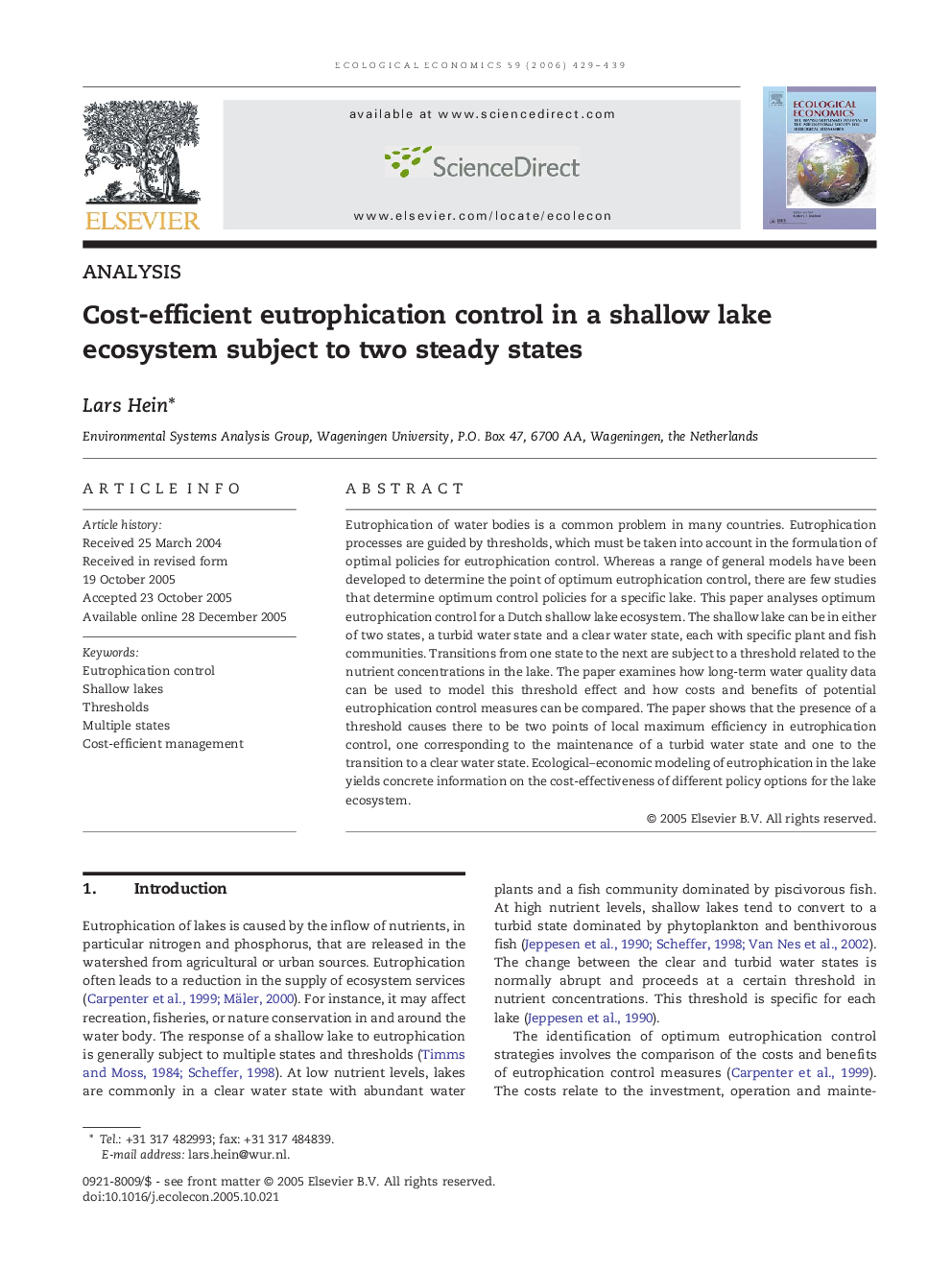| Article ID | Journal | Published Year | Pages | File Type |
|---|---|---|---|---|
| 5052160 | Ecological Economics | 2006 | 11 Pages |
Eutrophication of water bodies is a common problem in many countries. Eutrophication processes are guided by thresholds, which must be taken into account in the formulation of optimal policies for eutrophication control. Whereas a range of general models have been developed to determine the point of optimum eutrophication control, there are few studies that determine optimum control policies for a specific lake. This paper analyses optimum eutrophication control for a Dutch shallow lake ecosystem. The shallow lake can be in either of two states, a turbid water state and a clear water state, each with specific plant and fish communities. Transitions from one state to the next are subject to a threshold related to the nutrient concentrations in the lake. The paper examines how long-term water quality data can be used to model this threshold effect and how costs and benefits of potential eutrophication control measures can be compared. The paper shows that the presence of a threshold causes there to be two points of local maximum efficiency in eutrophication control, one corresponding to the maintenance of a turbid water state and one to the transition to a clear water state. Ecological-economic modeling of eutrophication in the lake yields concrete information on the cost-effectiveness of different policy options for the lake ecosystem.
